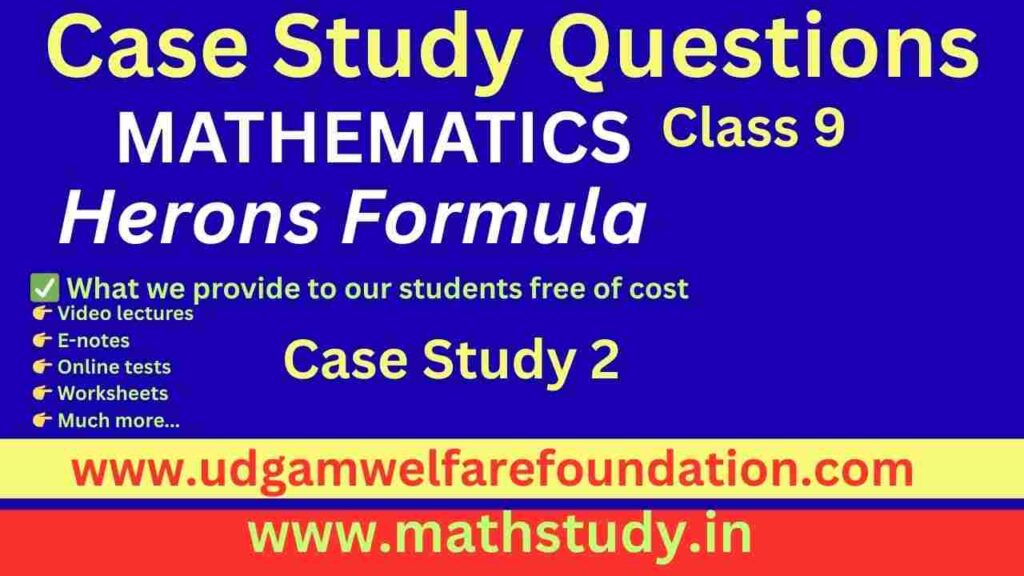Herons Formula Case Study Questions Class 9
The Herons Formula Case Study Questions Class 9 is an important part of CBSE exam preparation. Students often practice herons formula case study questions class 9 that focus on real-life applications, such as land measurement or plot design. These practical problems are also available in class 9 maths case study format for easy revision. Moreover, mastering herons formula class 9 builds confidence for solving application-based questions in exams.
Applications and Practice Material
The cbse class 9 case study includes case study questions on herons formula with step-by-step solutions. Students should also try herons formula extra questions case study for more practice. Furthermore, herons formula case study problems strengthen conceptual understanding. For thorough preparation, many resources provide maths case study questions class 9 and class 9 herons formula examples.
Case Study Questions on Heron’s Formula
These study materials guide learners through herons formula case study questions with clarity. Therefore, regular practice helps improve accuracy, speed, and exam performance.
Case Study on Heron’s Formula class 9 – 2
In an agricultural cooperative, three adjoining plots are arranged to form a triangular parcel with side lengths \(13\ \text{m}\), \(14\ \text{m}\) and \(15\ \text{m}\). The cooperative intends to install a drip-irrigation ring that follows the inner incircle of the triangle and must order pipe equal to the circumference of that incircle. Agricultural engineers must therefore compute not only the area of the triangular parcel to estimate water requirements but also the inradius and circumradius for planning the pipe and support posts. This scenario requires accurate use of Heron’s formula because no altitude is given. The problem also links geometric formulae to practical resource estimation (area \(\rightarrow\) water volume; inradius \(\rightarrow\) ring length). Use related identities and show how Heron’s result connects with \(r\) (inradius) and \(R\) (circumradius) for verification and procurement planning.
Useful formulae / properties \[s=\frac{a+b+c}{2},\qquad \Delta=\sqrt{s(s-a)(s-b)(s-c)}.\] \[\text{Inradius } r=\frac{\Delta}{s},\qquad \text{Circumradius } R=\frac{abc}{4\Delta}.\] \[\Delta = rs \quad\text{and}\quad \Delta=\frac{abc}{4R}.\]
MCQ Questions
Quiz Results
Correct Answers: 0
Incorrect Answers: 0
Percentage Score: 0%

